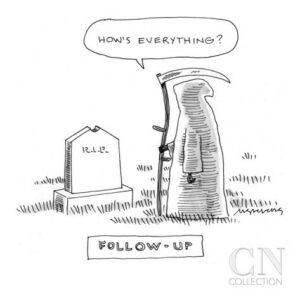The following is an English as a Second Language exercise that I created after a class at a KOTESOL conference. Feel free to tweak this and change it in any way you see fit. The whole concept of this lesson is to teach students the natural way that native English speakers speak in a conversation. It’s all about follow-ups. I started doing this with my students because it does two things:
- They start to pay closer attention to what their partner is saying.
- It teaches them to carry on a conversation instead of letting it just die after the person answers your first question.
After I taught them this it really increased their talk time and I wasn’t having to go around and keep them chatting quite as much. Also, I stopped hearing conversations like this:
- What did you do last weekend?
- My dog died and we had to bury him.
- That’s nice.
Of course I’m exaggerating but I have something similar before. I also tried to get them to express the correct reaction with a little feeling, either happy, sad, angry or some other emotion. I always told them when you do role plays pretend you are a famous actor.
Follow-ups in Conversation
 A follow-up can be a reaction, comment, or a question. A follow-up is what comes after the answer in a question. A follow-up is not part of the answer. For example:
A follow-up can be a reaction, comment, or a question. A follow-up is what comes after the answer in a question. A follow-up is not part of the answer. For example:
Leo: Where do you live?
Violet: I live near Seongnam.
Leo: Really? I live near Seongnam, too. We’re neighbors!
A follow-up reaction is the listening partner’s emotional response in a conversation for something his or her partner says. For example:
A: Look at my new jacket!
B: Wow! You look amazing! (Reaction)
A follow-up comment is the opinion, feeling, experience or observation of the listening partner on something his or her partner says in a conversation. For example:
A: Look at my new jacket!
B: Wow! You look amazing!
I’ve been meaning to get myself a new jacket as well. (comment)
A follow-up question is the question the listening partner asks to get more information and details from his or her partner in a conversation. For example:
A: Look at my new jacket!
B: Wow! You look amazing!
I’ve been meaning to get myself a new jacket as well.
Where did you buy yours? (Question)
Talk with your partner(s) and for each statement, write different follow-up reactions.
- I ate pepperoni pizza for dinner. Reaction: ______________________
- My mother hates pets. Reaction: ______________________
- Billy loves Ji-Hyun! Reaction: ______________________
Talk with your partner(s) and for each statement write different follow-up comments.
- I ate pepperoni pizza for dinner. Comment:___________________________
- My mother hates pets. Comment: __________________________________
- Billy loves Ji-Hyun! Comment: ___________________________________
Talk with your partner(s) and for each statement write different follow-up questions.
- I ate pepperoni pizza for dinner. Question:____________________________
- My mother hates pets. Question: ______________________________
- Billy loves Ji-Hyun! Question: ________________________________
Now Start a Conversation Exercise
Use an exercise that you have already done in the past but now with new and improved English as a Second Language Speakers! You can also have students just begin to speak with one another talking about regular small talk topics. If you haven’t tried one of my favorite ESL activities, you can have students use this when doing that one, too.
Good Luck with this one and as usual if you have any questions or ideas about this class, please leave a comment down below. And always remember that Teaching English is Fun!
Jim







Hi, I like your website niche. This is a great topic I don’t think there are enough websites like this these days that are educational. I know English is one of the hardest languages to learn so its great that you are helping people learn english online through this website which I must also say is very informative.
Thank you so much for the nice comment, Nikki. I figure that this site can serve two purposes. It can help those teachers who need to find some fun and yet educational activities for an ESL class, and as time goes by, I may make some interactive games and activities for ESL learners as well.
If you have any need of any class or information feel free to ask and if I don’t have it on hand I will make it!
All the best,
Jim
Being an ESL Teacher before. This learning technique was being practiced ever since. The emphasis for ESL is to be conscious on the message conveyed so both listening skill and the speaking skill through reaction and in hope of making the conversation to be prolonged as much as possible in a sensible way. Iput upon the Theory that frequent guied conversation and open-ended topic helps the learner to express himself freely. Practice in speaking skills is the bedrock of speaking skills in English. The communicative approach gives more points than grammatical or language structure but without giving attention to 4 language skills areas. It is a specific item in the practice of ESL speaking skills. Good emphasis, it could be adopted in any situation.
Thank you so much Great Mega Winner! I can see you have had some experience in this. I am pretty sure that was the emphasis of the conference where I learned this class. They were focusing on creating a communicative classroom.
The nice thing is with a lot of these ESL activities that I am posting is that they can be used in many different situations. They can also be used to build upon any lessons you might already be teaching.
Thanks again for the great input and all the best,
Jim